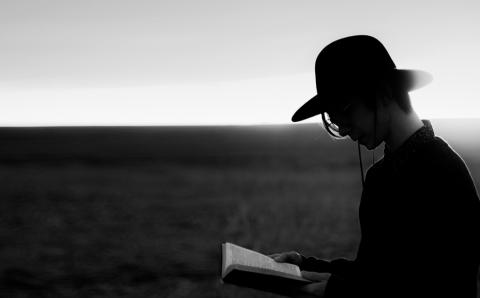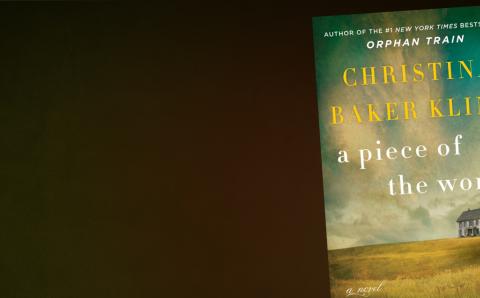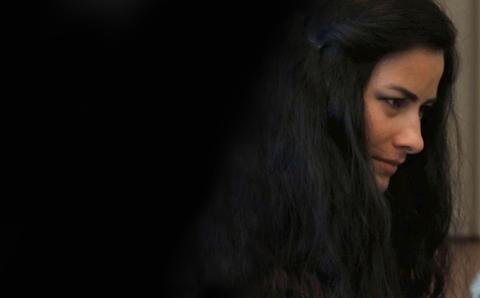Before I met my husband, my understanding of “mass” was limited to a vague notion of its usefulness in physics. He had no idea “tulip” was anything but a pretty spring flower.
Married now for 19 years, my husband and I have made a mixed-faith marriage—he a Roman Catholic and I, Christian Reformed—work.
Navigating through our faith differences has been intermittently smooth and difficult, fraught sometimes with different expectations of what it means to be followers of Christ. But it has also enriched our journey and, we believe, our church.
A Pew Research Center study published in October 2016 suggests our mixed-faith marriage is less a rarity than it once was. The study says about 10 per cent of United States adults were raised in families where the parents had different religious affiliations. The percentage is even higher, about 27 per cent, for Millennials.
What that suggests is that all our churches are likely to be experiencing a surge in mixed-faith marriages and relationships. And it means that we as a denomination and congregations and members face both a challenge and a privilege as we celebrate God’s goodness through different faith traditions.
While I’m no authority on the theology or sociology behind the trend Pew identifies, perhaps I can speak with experience about some of its realities.
When Dan and I met, he made it clear his Catholicism was an important part of his identity—tied to the unique history, culture, and francophone élan of the province of Quebec as much as to a religious tradition. He was baptized as a baby, confirmed at 11, graduated from Catholic schools, and knew by heart the rites and rituals of Mass. Saved-by-works was ingrained in his DNA.
I was born and raised in a Christian Reformed Dutch immigrant family and professed my faith at 18. Tulips grew in my mother’s garden and in my catechism class, where teachers emphasized T (total depravity), U (unconditional election), L (limited atonement), I (irresistible grace), and P (perseverance of the saints). Saved-by-grace all the way.
When Dan and I grew our friendship, we knew a relationship as a Christian couple would have to stand on common ground and not fall on differences: we had to parse out which of our beliefs were matters of salvation and which were cultural practices. In the latter category, it puzzled me that he’d never heard the old hymns I knew by heart, and he felt like an outsider to see hymn numbers displayed on a board that read “Looft den Heer” (Dutch for “Praise the Lord”).
Our discussions included the nature of Jesus’ mother Mary, the meaning of communion, sinful-by-nature, infant baptism and believer's baptism, evolution, tithing, and even whether it’s commandment-breaking to eat Sunday brunch in a restaurant. Do we spend Christmas Eve at a candlelight service or at Midnight Mass (or both)? Couldn’t the world use a few more Mother Teresas? And why-oh-why does our catechism insist Catholicism is a “condemnable idolatry”? (A recent translation places this text in brackets.) We still place an asterisk beside a lower-case “catholic” in the Apostles’ Creed, just in case someone might think it’s possible for a Christian to believe in a holy (big-C) Catholic church.
We worked hard to delineate where we differed, and why. We came to an understanding of what was important to us, and why. As I surveyed some friends within our congregation, they said they discussed the same questions at profession of faith classes or with family. Others hashed out their differences during student suppers in a supportive multifaith atmosphere. One couple told me, “We needed to figure this out, and that made us stronger in our faith, individually and as a couple.”
For us, by prayer and study and sometimes by sheer osmosis, we came to a few epiphanies about the core of the other’s faith traditions. Dan grew to realize that good-deeds salvation is an unattainable threshold; it came as a relief to him that he need not wonder if his actions were “good enough” to earn God’s love. I gained some insight into the majesty of Mass, the beauty of ceremony, and the faithfulness of a worldwide community of believers who do fervently belong to a holy Catholic church.
We were married by two CRC ministers in a gathering that honored both my by-the-book heritage and his joie-de-vivre traditions. “My” church became our church.
Dan has found in our congregation a people who love him and encourage him to exercise enthusiastically his gifts of leadership. He guides the youth band, is a mentor to teens in the youth group, is a key member of outgoing and incoming SERVE teams, and is a guitar-playing and banjo-strumming member of our praise team. I marvel at his spiritual maturity (and sometimes at his time management skills).
I’m an elder and church school teacher. We worship and pray and raise our children together in a Christian home. Some of our closest relationships are within the faith community where we both belong.
Yet I remain Christian Reformed and Dan remains Roman Catholic. These are choices we have made separately and together. And in some ways, that also means we remain outsiders to each other’s faith traditions and privileges.
The Roman Catholic Church does not recognize our marriage as a sacrament to the Lord. The Christian Reformed Church does not recognize Dan’s Catholicism as sufficient for full membership. He partakes fully in communion, volunteering, and benevolence, but does not vote or hold office. I find comfort and nearness to God at a Catholic Mass but know we would have needed special permission to enroll our Protestant-baptized children in Catholic elementary school here. While we are spiritually on the same page, denominationally we live in a world of neither/nor and both/and.
It’s a dichotomy shared by a dozen or so couples in our congregation whose stories are as individual as they are. Some have made professions of faith in the CRC, while others have not. Some attend Saturday night Mass and then Sunday fellowship with us. One couple told me it’s tough enough on Catholic extended-family relationships to worship in a Protestant church without adding the alienation that official membership would bring. Two mixed-faith couples told me their profession of faith would not only feel redundant, years after they publicly confirmed their commitment to Christ in a Catholic church, it would also seem like a denial of all that was holy and sacramental about that original confession.
And, yes, we all know families that have decided it’s all too much to navigate—and, rather than choose one or both, choose neither. The Pew Research poll found that about 20 percent of people raised by mixed-faith parents express no religious affiliation at all. (By comparison, about 10 per cent of people raised by two Protestant parents declare no affiliation.)
This is the growing generation of what the Pew Research authors call the religious “nones.” I suspect, though, the number of “nones” is more likely to grow because of their parents’ religious indifference than because of their parents’ religious differences.
If churches aim to cultivate a healthier relationship with their multifaith families, I think they will first have to erase some assumptions about who we are. We are not the “member plus one,” but whole families with unique perspectives, gifts, and traditions that can help grow a congregation. Churches, then, need to set aside the notion that (by virtue of membership alone) one person is equipped for service and the other is not; one capable of leadership, the other exempt or unqualified. This is not an argument in favor of universalism but on the side of greater fellowship and truer discipleship.
Don’t make assimilation, spiritual or cultural, a condition of receiving a sincere welcome. One couple told me their biggest struggle was not with any interfaith challenges but with expectations that he should try to “act a little more Dutch.” That couple said it’s essential that children, and their friends and our friends, see congregations of people who are able and willing to differentiate the essentials of faith from its cultural trappings. “The next generation is watching us as we act out our faith by showing love to those who are different from ourselves. . . . We should celebrate the love of God that binds us together,” they said.
Our family is continually blessed by our congregation. Our children are becoming followers and leaders in their own ways and feel a powerful connection with the God who loves them—a God who also maybe smiles with affection at their odd melange of Dutch-Irish, Catholic-Reformed, Quebecois-Ontarian traditions.
Perhaps the clearest example I can think of to describe the blessings of mixed-faith traditions is the joy of Easter every year as we gather at sunrise outside a 300-year-old Catholic convent beside the St. Lawrence River. This year, the interfaith service was led in two languages by a Catholic priest, an Anglican priest, and male and female ministers from four other Protestant denominations. Beneath the outstretched arms of an enrobed statue of Jesus, we broke a loaf of Hungarian braided bread and shared it. We dipped our fingers into a bucket of frigid river water and made the sign of the cross on our foreheads to show we belong to a risen Lord. The sun rose and robins sang like God’s benediction to us all.









